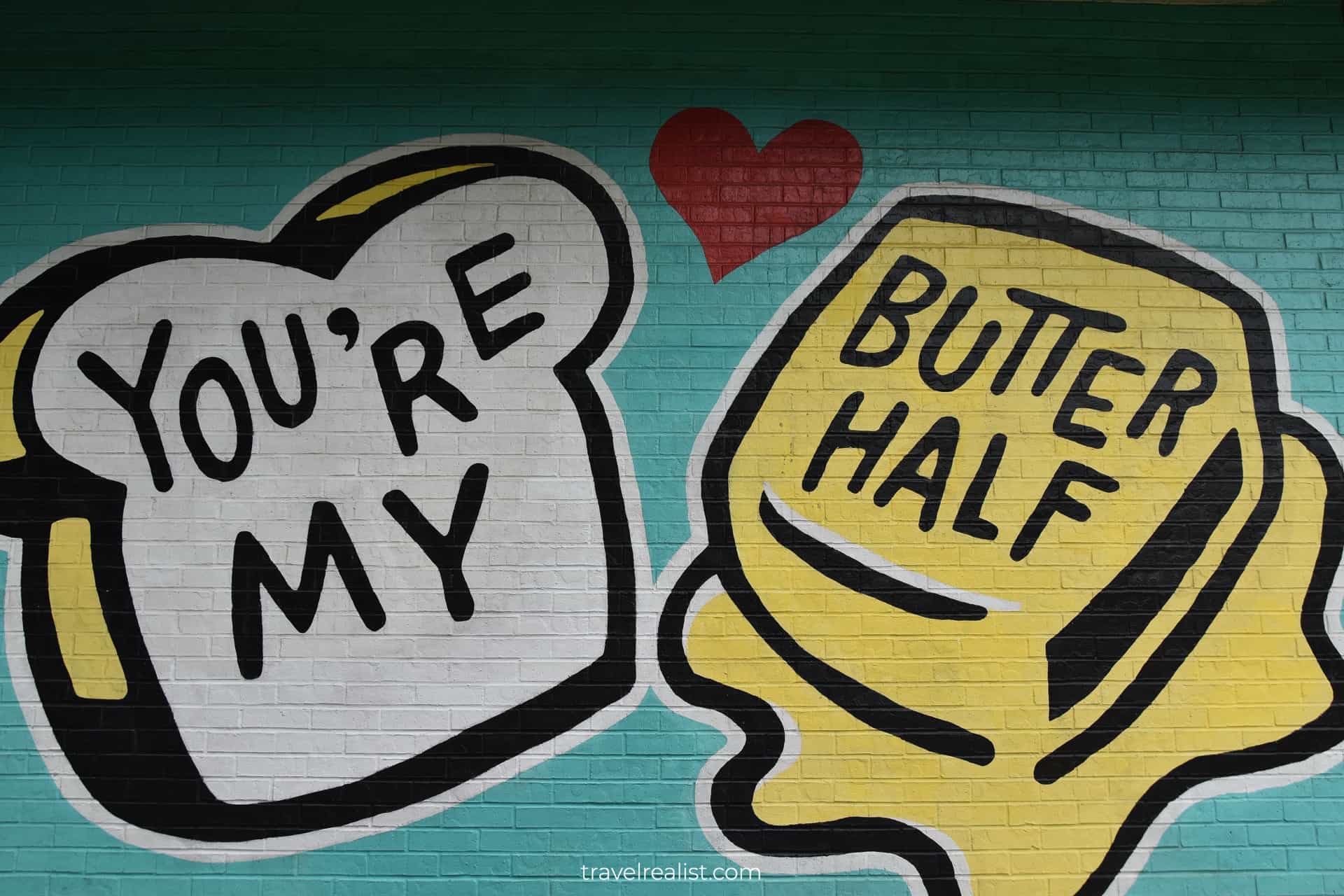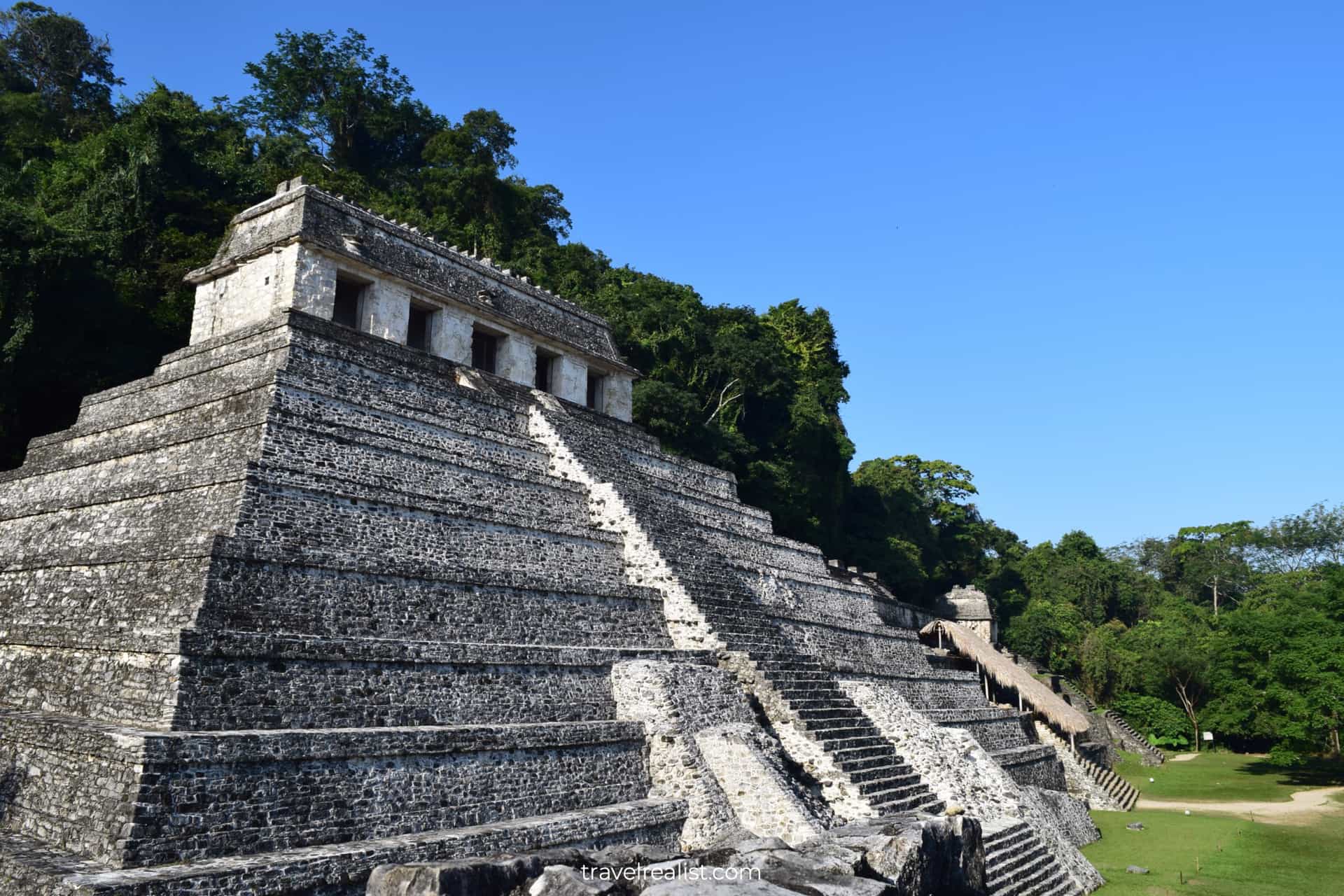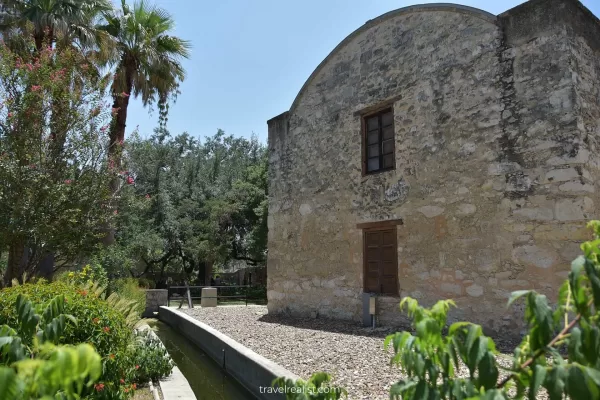Flower Hill: An Urban Homestead in The Heart of Austin
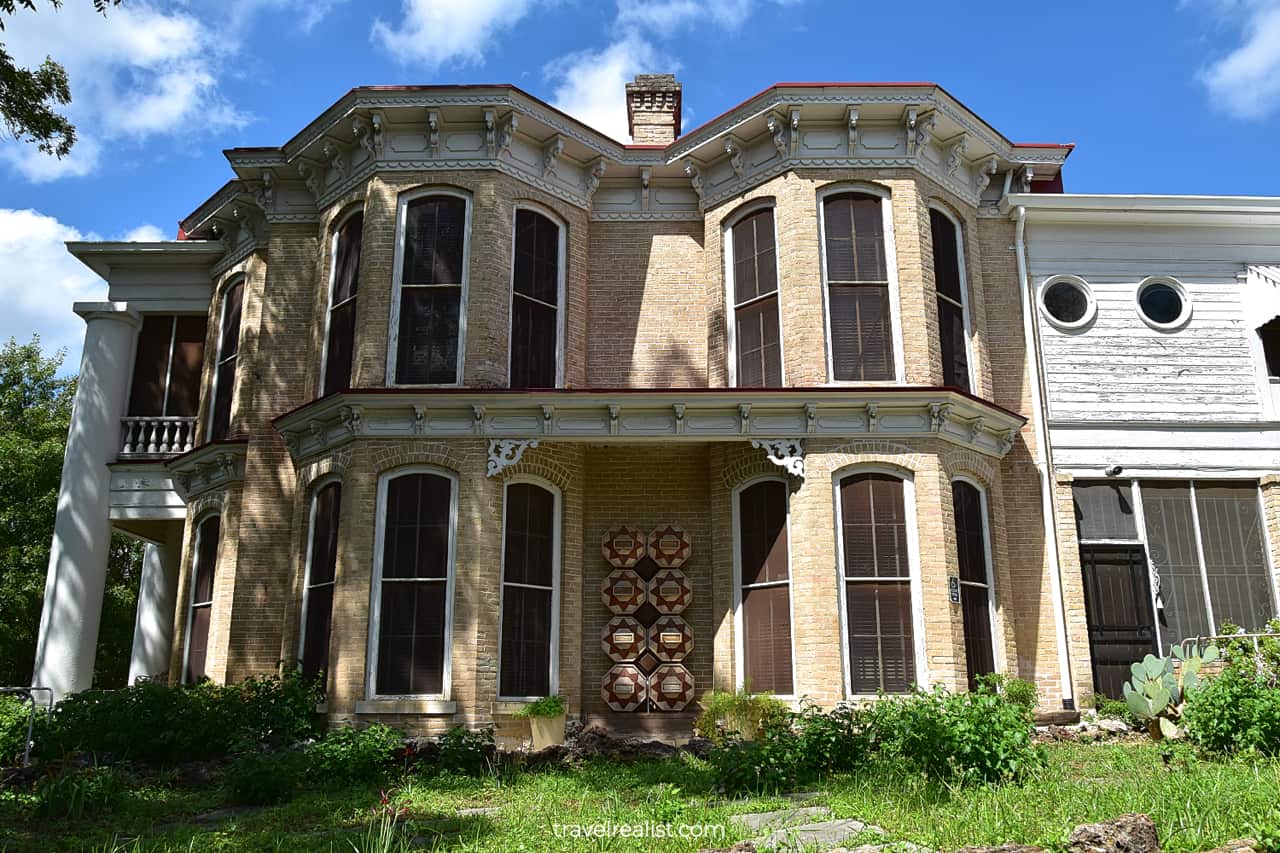
This realistic Flower Hill Austin Guide helps you plan your next adventure in this historic house museum.
The Flower Hill Urban Homestead Museum is a single-family historic house in Austin, Texas. This museum preserves an 1877 mansion and its grounds.
This post includes affiliate links that will earn us commission if you make a purchase via these links.
Sights & Places of Interest
Flower Hill is a nearly 150-year-old house in the Capital of Texas. The house only belonged to one family, the Smoots. Descendants of this family lived in Flower Hill for over a century.
Flower Hill Urban Homestead became a museum in the 1980s. This fully furnished house preserves the way life was from the late 19th through the mid 20th century.
This Flower Hill Austin Guide covers a typical visit to this house museum. It starts by describing the park grounds before exploring the rooms of the historic mansion.
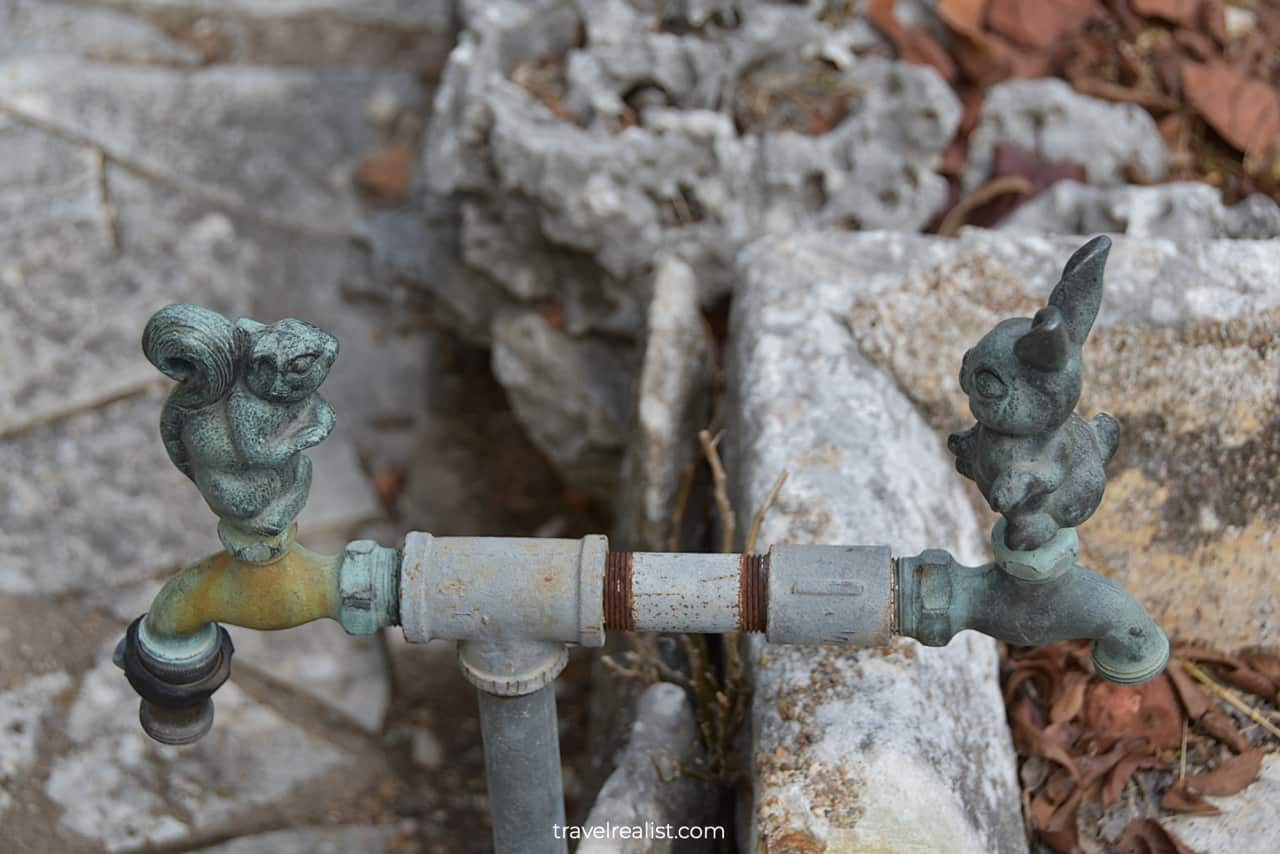
1. Park Grounds
Every visit to Flower Hill starts with a walk on the park grounds. The main entrance to the museum is on West 6th Street. It happens to be the best way to experience the grounds of this house museum, too.
You will see the famous flower hill that gave this homestead its poetic name. If you visit the museum in the spring, you will see flowers blooming beneath the live oaks.
Take a 19th century carriage drive to the Front Porch of the mansion. Stop by Rose Arbor before heading inside. Carriage Garage, Stables, Barn, and all other buildings on the grounds are off limits to the public.
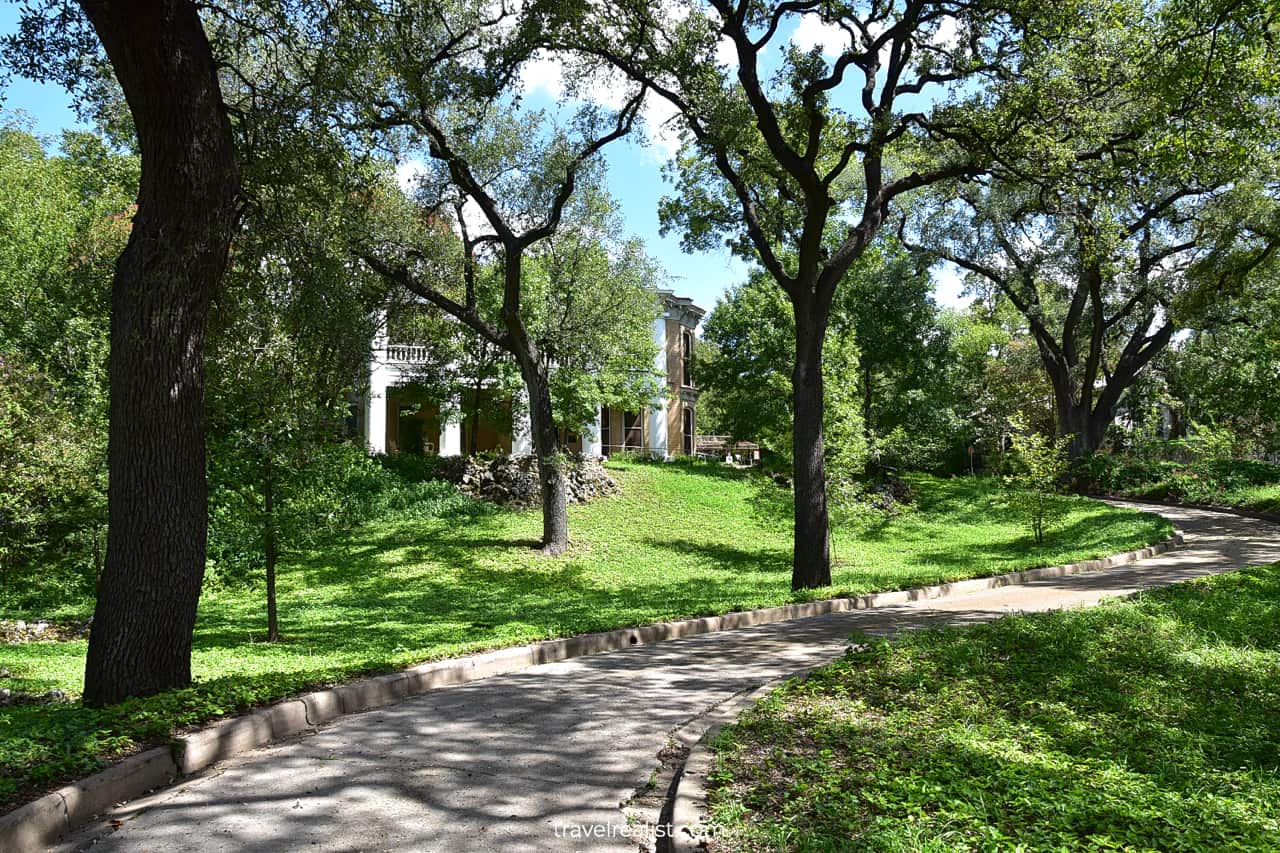
The museum entrance from Pressler Street is far less scenic. It is true that it has original ironwork. The wrought iron gates and railings date back to the 1870s.
Sadly, time has not spared this ornamental ironwork. Rust and peeling paint reveal a dire condition. This view is more fitting in a haunted mansion like the Winchester Mystery House in San Jose, California.
Your donations and tour fees help restore Flower Hill. Of course, a few metal items are still standing strong. Take a look at the outdoor spigots. Metal animal figures instead of faucets make them unique.
Your exploration will stop with the grounds unless you manage to arrange a guided tour. The mansion interiors are worth the trouble of setting it up. See the main rooms in this Flower Hill Austin Guide next.
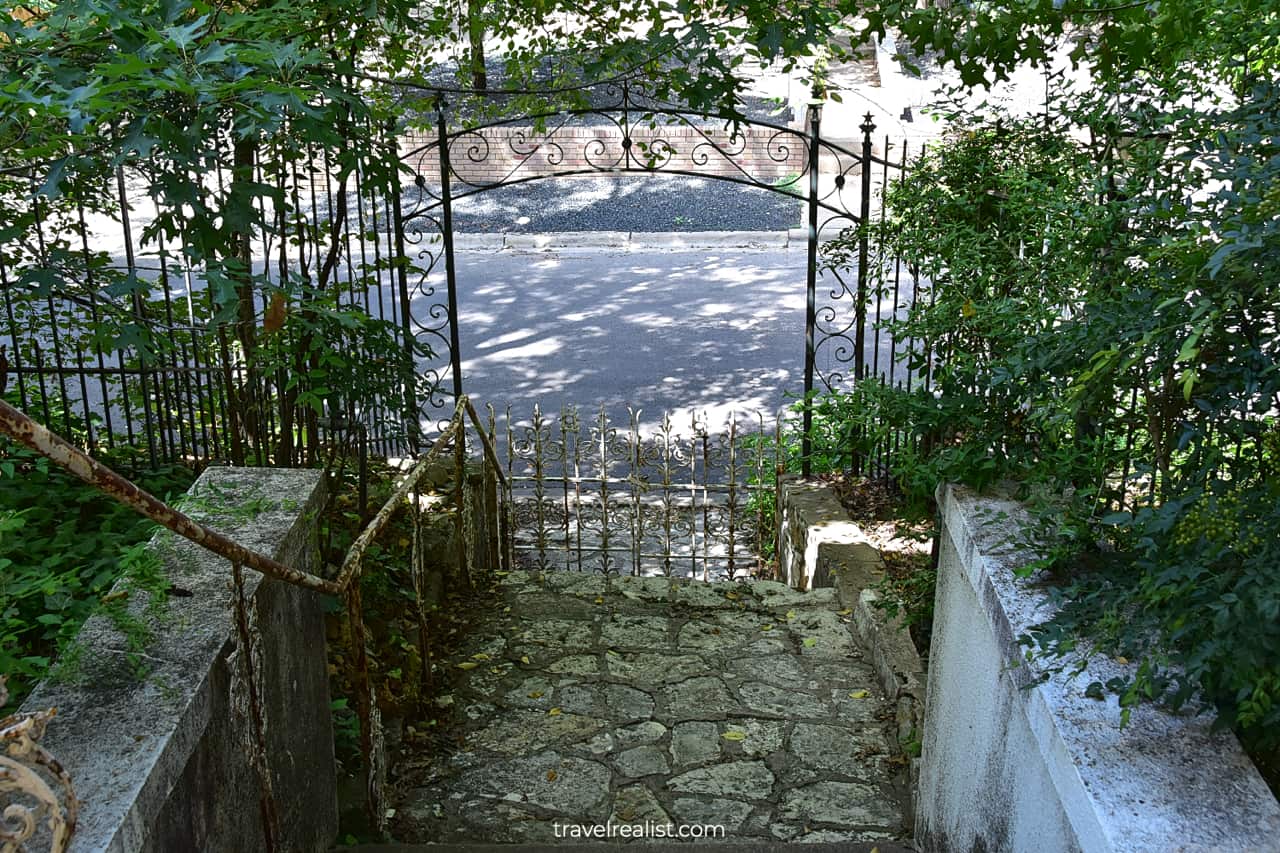
2. Front Hall
The Front Hall is the first room you would visit on a tour of Flower Hill. It is a narrow and long hallway that connects the whole house. You could go from the Front Porch all the way to the back door.
All rooms on the first floor are within reach from the Front Hall. The Wedding Parlor and Living Room are to your right. The Library is to your left. The Dining Room is at the end of the hall, opposite the front door.
A wooden staircase has a curve as it approaches the second floor. Few other house museums use this shape. But the Gibson House in Boston and the Haas-Lilienthal House in San Francisco come close.
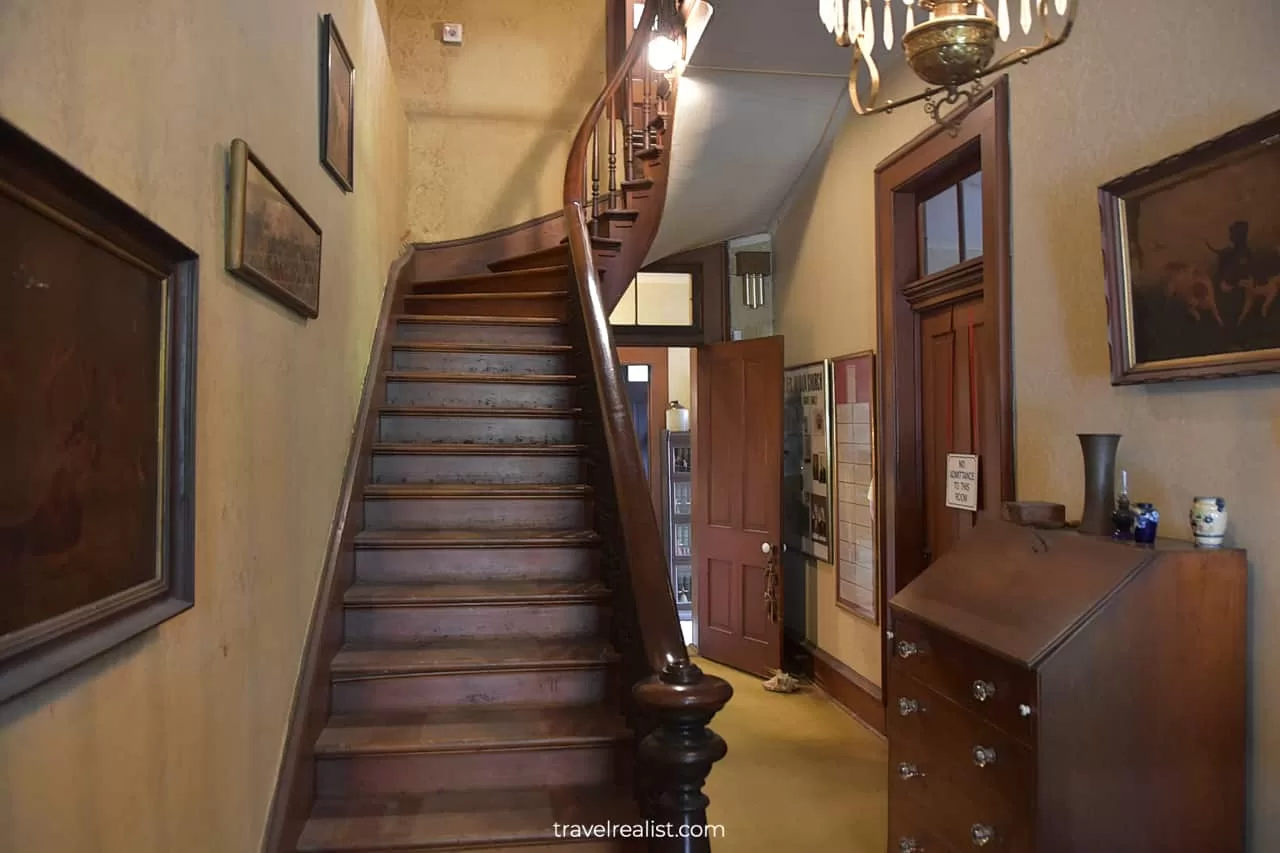
3. Wedding Parlor
The Wedding Parlor is a great next room to visit on the first floor. This room gives you a good idea of things to expect in the Flower Hill Urban Homestead Museum.
You will see a lot of exquisite furniture pieces and historic items in the Wedding Parlor. But you have to make an effort to see any of them. The wooden blinds let very little daylight into the room.
The artificial lighting in most rooms of the house museum does a fairly poor job. This fact makes Flower Hill similar to the Vanderbilt Mansion in New York and Ringwood Manor in New Jersey.
A low-light environment might be better for protecting these historic items. But getting nice pictures without flash will be a real challenge. Yet, you might still be able to make it work.
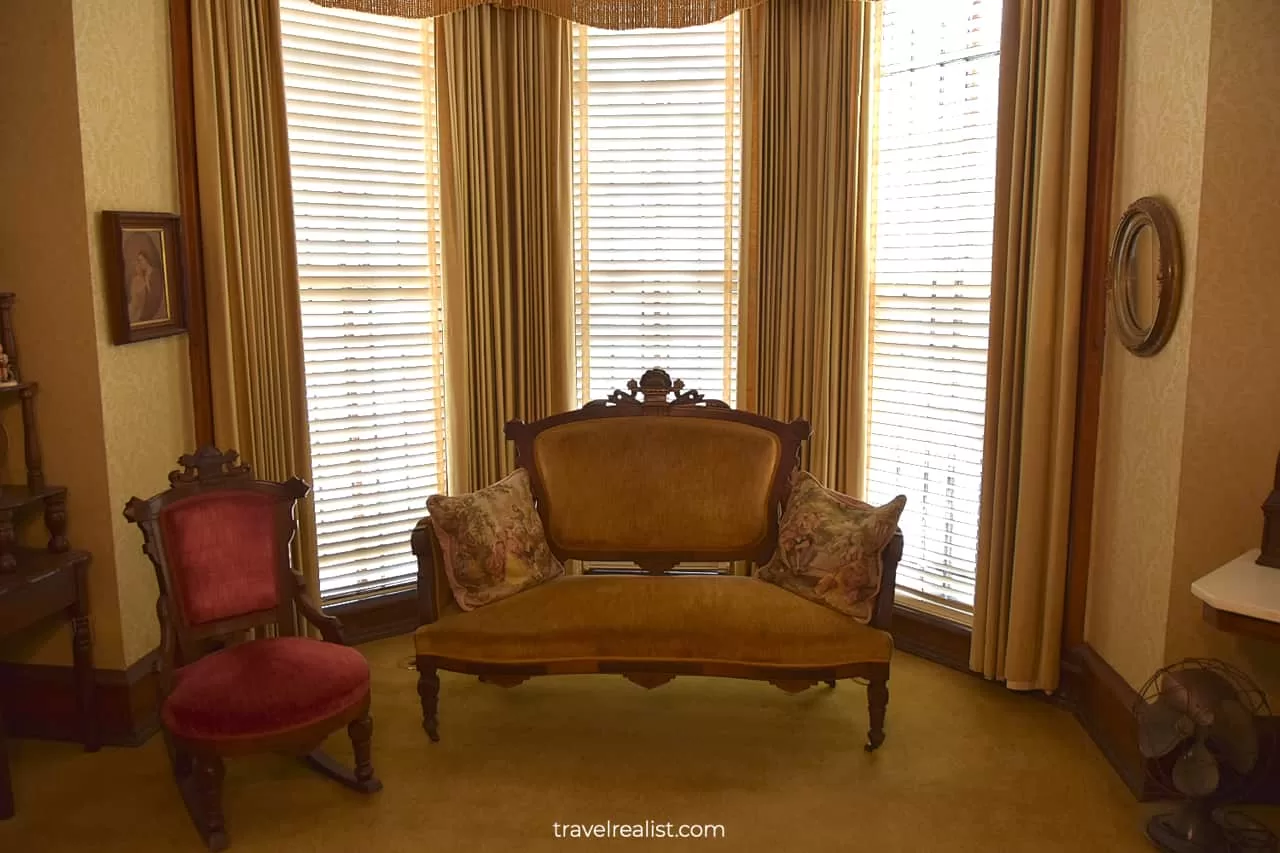
4. Library
Depending on the restoration progress, a few rooms of the historic mansion might be closed. If the living room is off limits to the public, walk across the hall to the Library.
The Library is one of the most interesting rooms in the Flower Hill Urban Homestead Museum. There are a handful of bookcases and display cabinets.
Different keepsakes tell a travel story of the Smoot family. It is fascinating to go around the room and learn about all the places they visited.
This room looks a lot like the Library at the Gifford Pinchot House near Delaware Water Gap. You could see a similar variety of books and exhibits at Flower Hill.
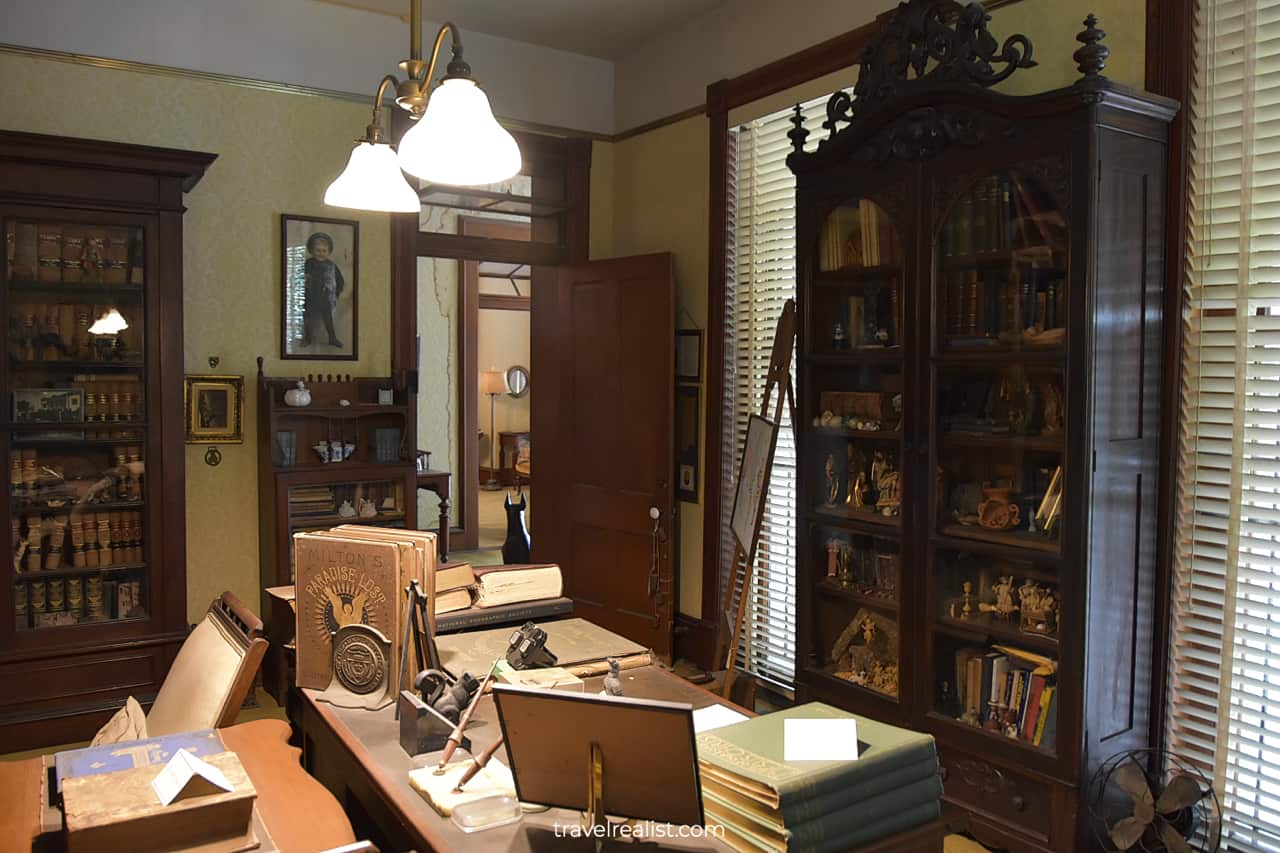
5. Downstairs Bathroom
The Library connects to the Downstairs Bathroom. You will find a large bathtub, a toilet, and a tiny sink. A handful of shelving units house towels and exhibits. A large cowhide is on the wall.
This room feels a bit more modern than the rest of the house. It feels as if it dates to the mid 20th century, like the Texas White House at the LBJ Ranch.
You might notice a few cracks on the wall in the Downstairs Bathroom. If you had doubts before, it should be quite clear now that Flower Hill is in need of restoration.
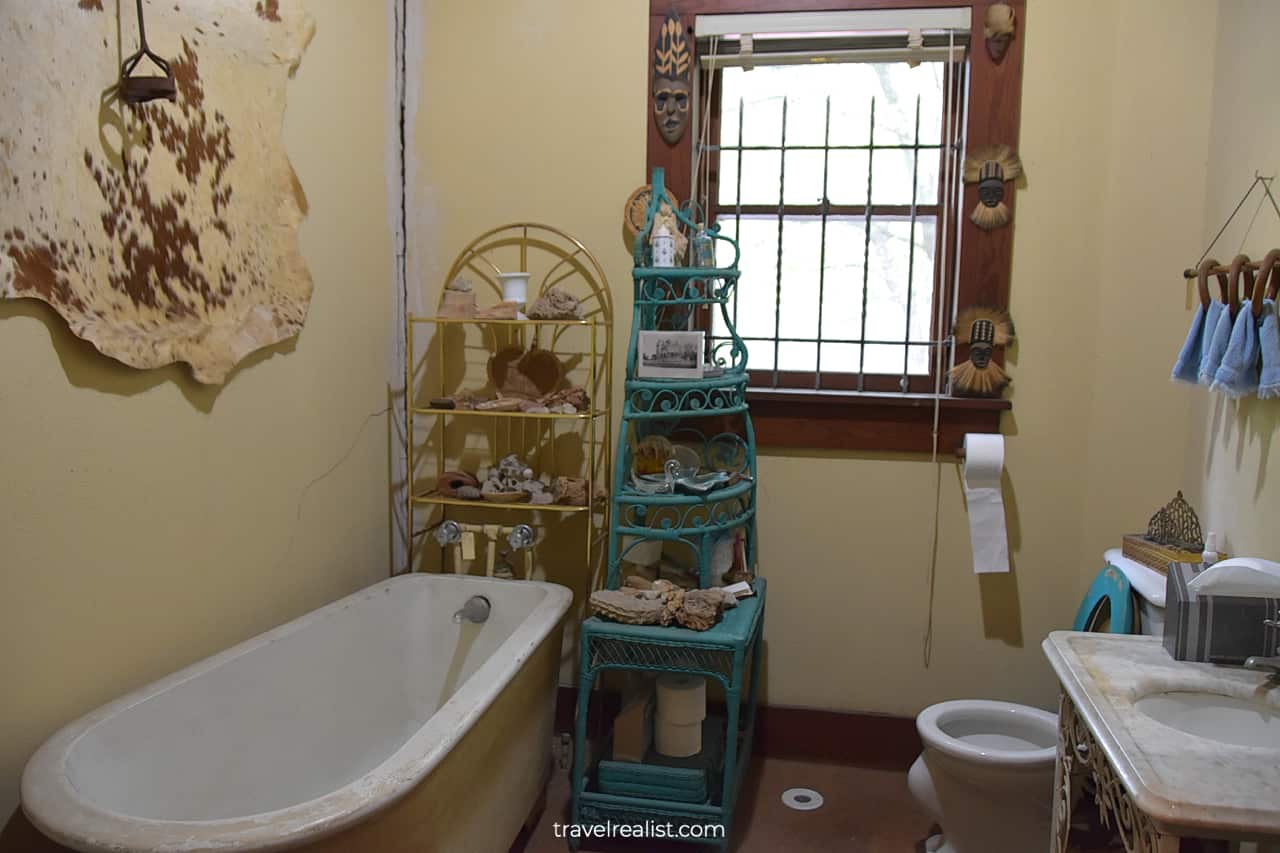
6. Dinning Room
The Dining Room is the last room on the first floor that is open to the public. This room has a beautiful lighting fixture above a rectangular table.
Wooden display cabinets house porcelain, lead glass, and metal tableware. They put Flower Hill on the same list as the Nichols House in Boston and Hillwood Estate in Washington, D.C.
The Dining Room appears a bit mismatched. Its furniture pieces have at least six different wood types. It feels as if these display cabinets, chairs, and tables came from different rooms.
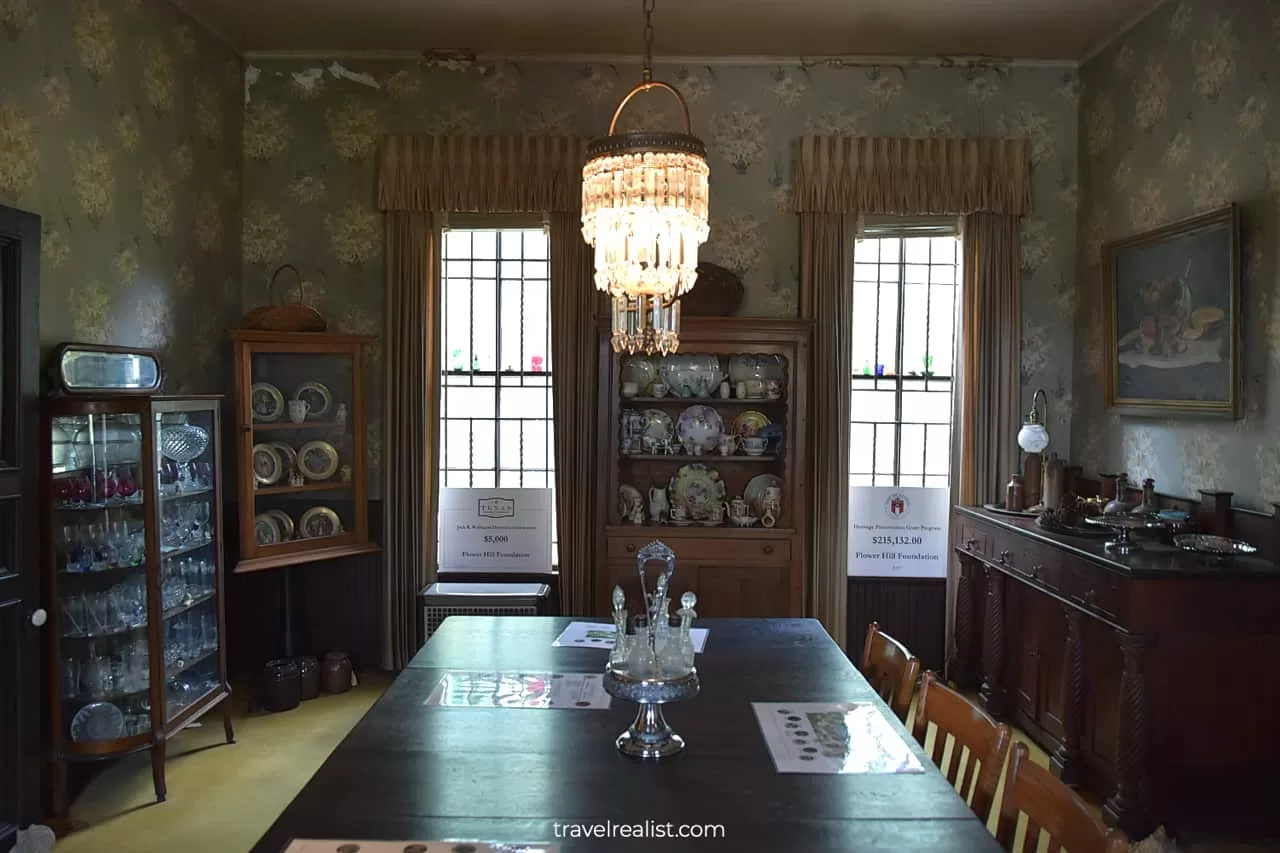
7. Upstairs Hall
It could be a great time to take the sweeping staircase to the second floor. You will find yourself in another hall. There are two wooden benches in this room. Both might fit better outside of the house.
The walls have family portraits and framed documents. Take some time to study these historic exhibits. Head to the desk at the far end of the room next. It has an exquisite table lamp.
This hall looks and feels quite similar to the Meeker Mansion near Seattle, Washington. Both houses date back to about the same era.
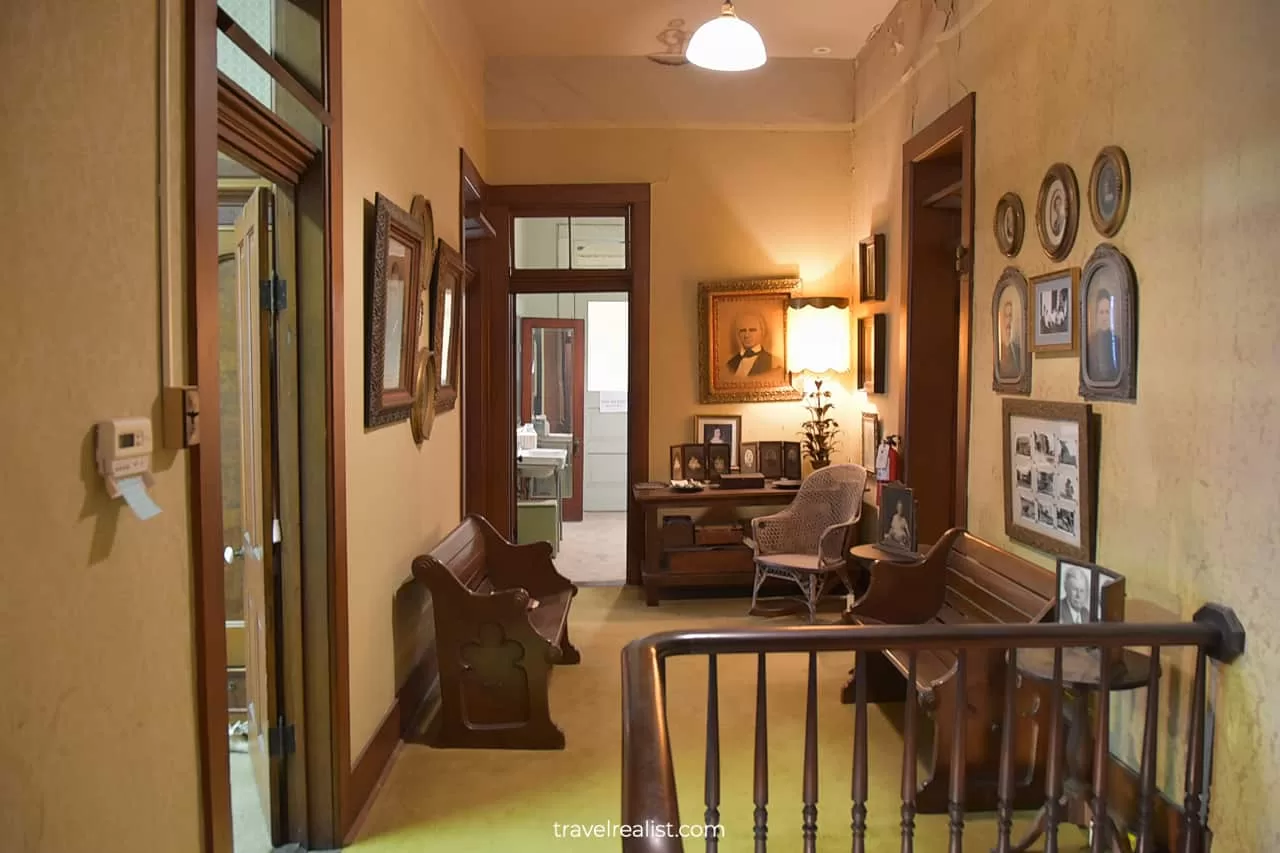
8. West Bedroom
There are four rooms on the second floor that are open to the public. Another bathroom is directly opposite from the staircase. Bedrooms make up the other three rooms.
You will enter the West Bedroom if you take a right from the desk in the Hall. This bedroom has two twin beds. The beds are identical and have massive wooden head and footboards.
This room is very well lit. You could explore the historic items without needing a flashlight. This is quite a change of pace compared to most rooms at Flower Hill.
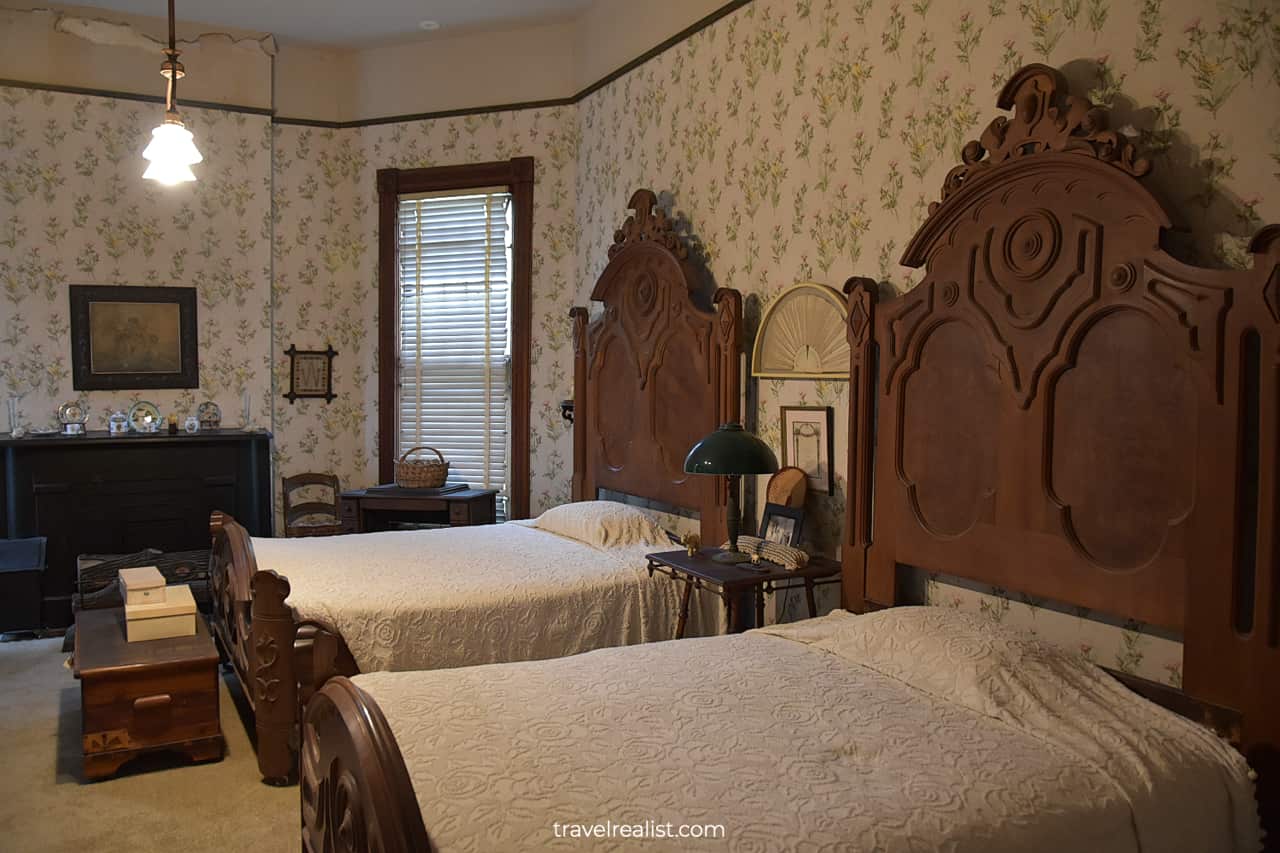
Two beds give away the main use case of the West Bedroom. It used to be a kids room back when the Smoots lived in the house.
You could see first-hand how fondly Jane Smoot described this room on a virtual tour. This is one way to learn about the house from the owner while the guided tours are on pause.
The West Bedroom has another notable item. A three-story doll house is a true highlight of this room. You could still see dolls, teddy bears, and other toys as if their owner just finished playing minutes ago.
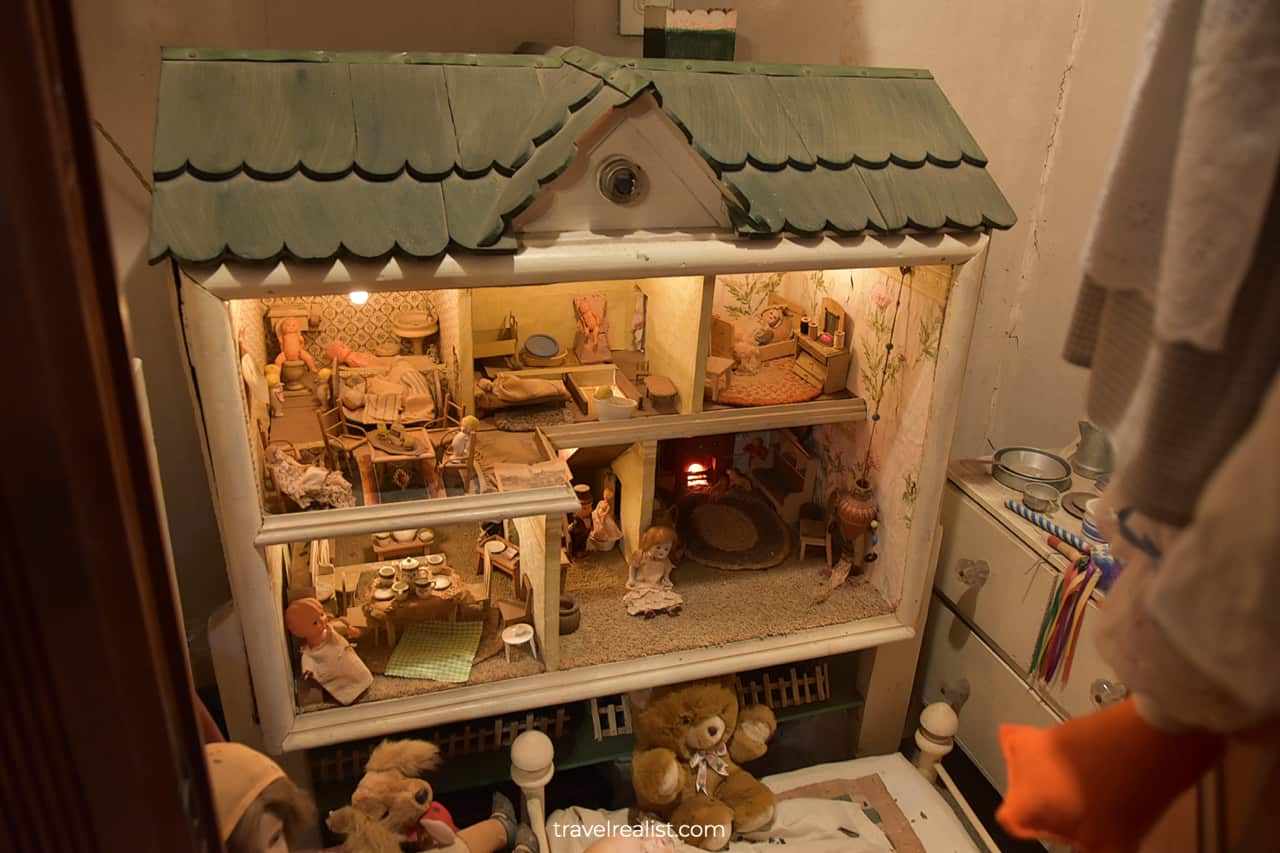
9. Packing Closet
The West Bedroom connects to the Packing Closet. A handful of house museums like the Molly Brown House in Colorado used to have walk-in closets.
But the Packing Closet in Flower Hill Urban Homestead is much more than a simple closet. This room has exposed brick walls and wooden shelves.
Plenty of sunlight reveals a lot of chests and leather trunks. It is easy to feel as if you are at a railway station back in the early 20th century. You are just dropping off your luggage before a train to Chicago.
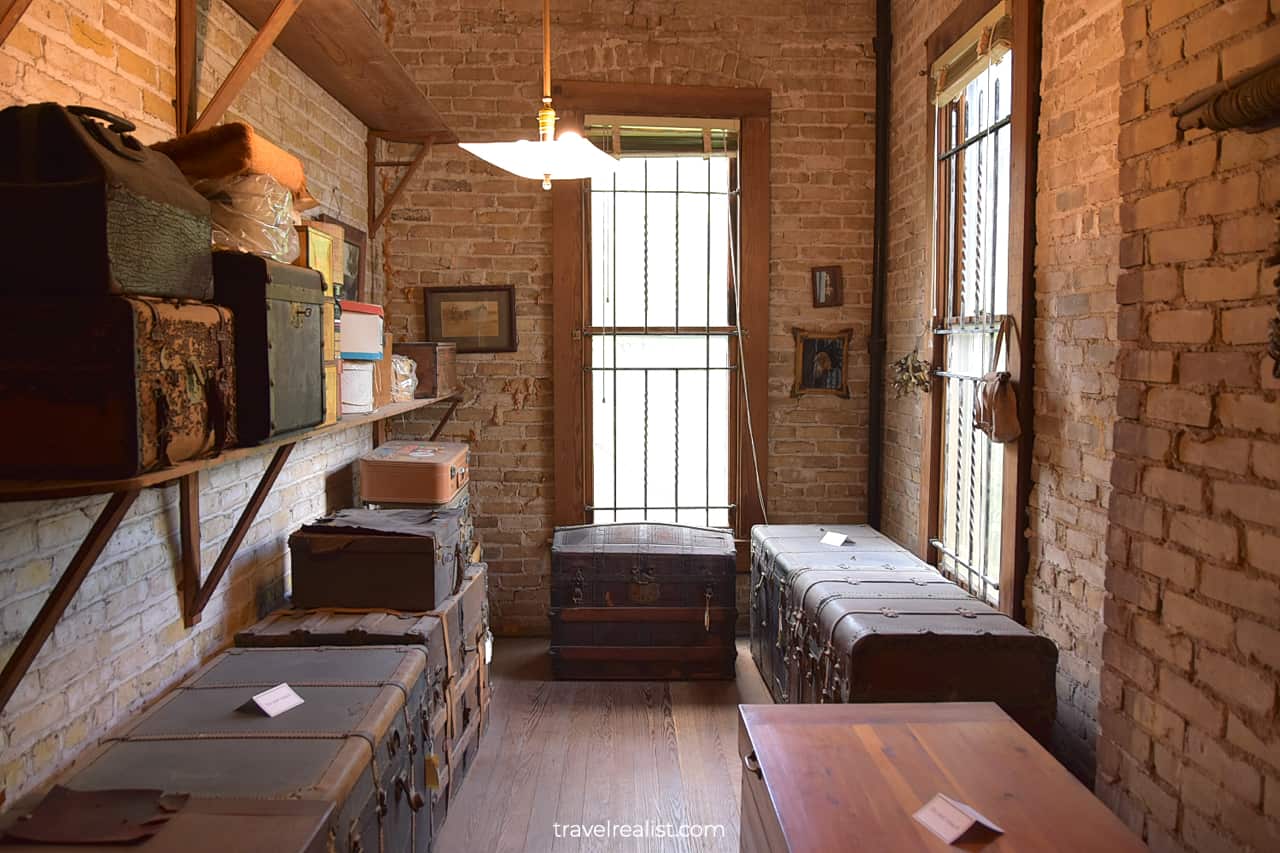
10. South Bedroom
Once you have studied all the items in the Packing Closet, you might want to continue exploring Flower Hill. Go across the Hall to the South Bedroom. Despite its name, this room has the least amount of light.
A sleeping porch next to this bedroom might be to blame. This screened balcony above the Front Porch takes away a lot of light. The shutters do the rest.
You will find a wooden bed with an even bigger headboard in the South Bedroom. Rocking chairs and a rocking crib are other notable items in this room.
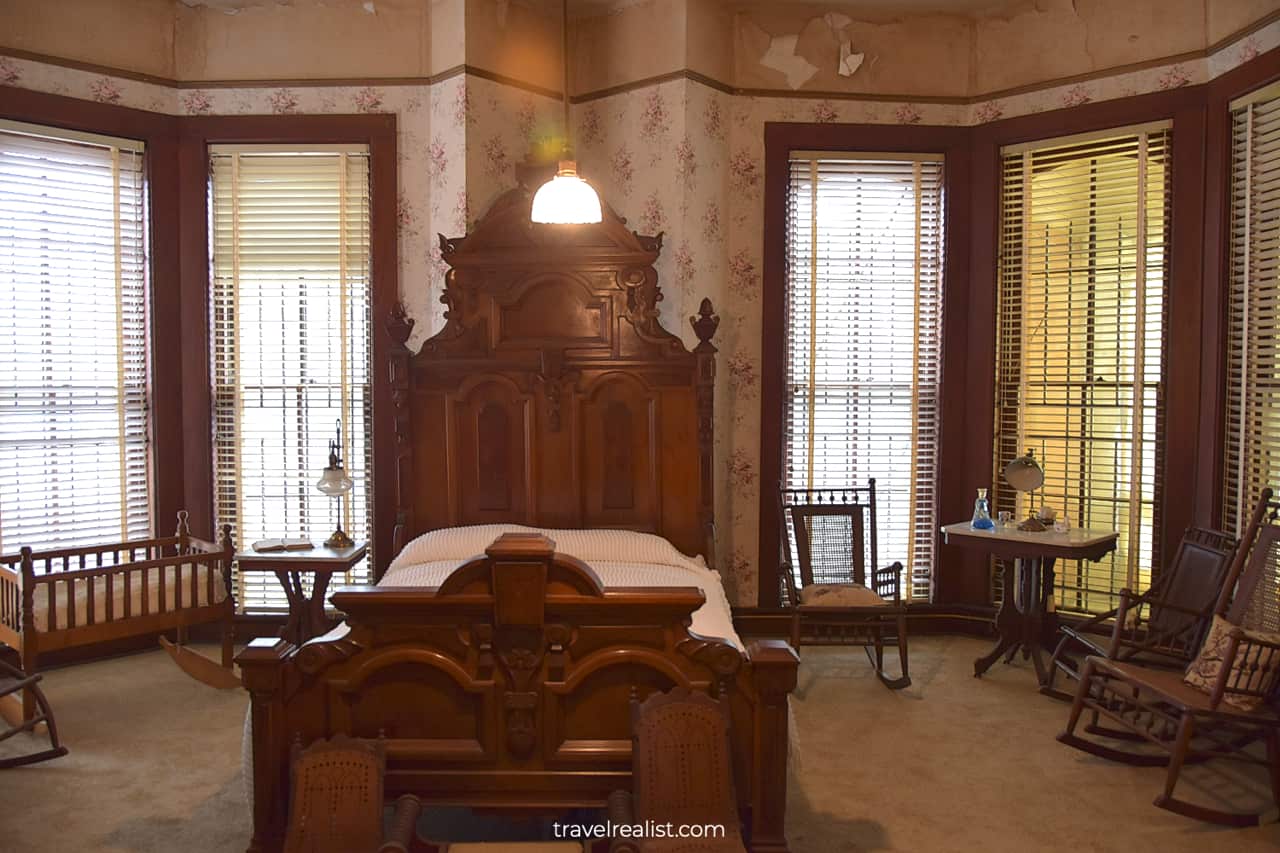
11. East Bedroom
The Second Floor Bathroom does not look much different from the one you saw on the first floor. It is better to take more time to explore the East Bedroom instead.
This room has a double bed, a dresser with a mirror, and a few matching chests of drawers. An armchair with an ottoman rounds up the list of the furniture items in the East Bedroom.
This is the only room in the house that has a vintage TV set. You are welcome to study family pictures on the walls. This room marks the end of a Flower Hill tour. You need to take the stairs back to the first floor.
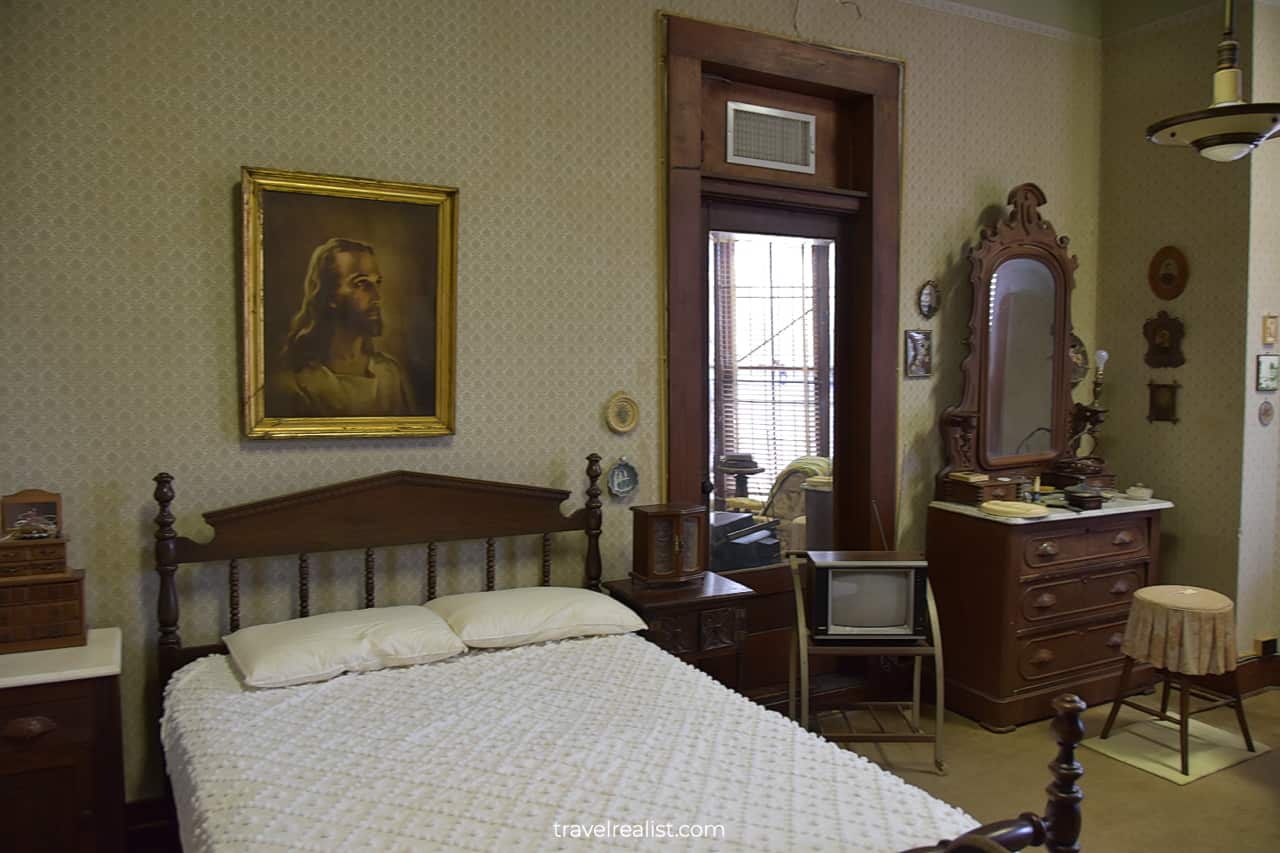
Continue with this Flower Hill Austin Guide. You will learn more about ways to get to the sights, entrance requirements, and places to stay.
Getting to Flower Hill Urban Homestead
The Flower Hill Urban Homestead Museum is in the center of Austin, Texas. This house museum is in Clarksville neighborhood between Lamar Boulevard and Mopac Expressway.
This neighborhood is across Shoal Creek from Downtown Austin. The museum is on West 6th Street, a street famous for its bars, clubs, and live music.
This central location gives you plenty of ways to reach Flower Hill. You could choose between driving a car, riding a bus or a bike, and walking to the museum.
A car is the fastest way to see this house museum. Flower Hill is 5 minutes from Downtown Austin and 20 minutes from Austin Airport.
Lack of designated parking could be an issue when driving to the museum. Street parking comes to the rescue. There are usually a few unmarked parallel parking spots near Flower Hill on Pressler St.
Buses 4 and 663 stop in front of Flower Hill. The former route goes across Clarksville, Downtown, and East Austin. The latter route connects UT Austin with Westfield. A ride costs $1.25 each way.
Biking is an environmentally friendly way of reaching Flower Hill. The museum welcomes you to use its fence and railings to lock your bike.
Flower Hill is one of the few museums in Austin, Texas you could reach with an electric scooter. Lime and Bird are two companies that provide scooters around the Capital of Texas. Download an app and sign up.
Last but not least, you could use walkways on 6th Street to get to Flower Hill on foot. This will be the longest and not the most scenic route. But you could turn your visit into a workout.
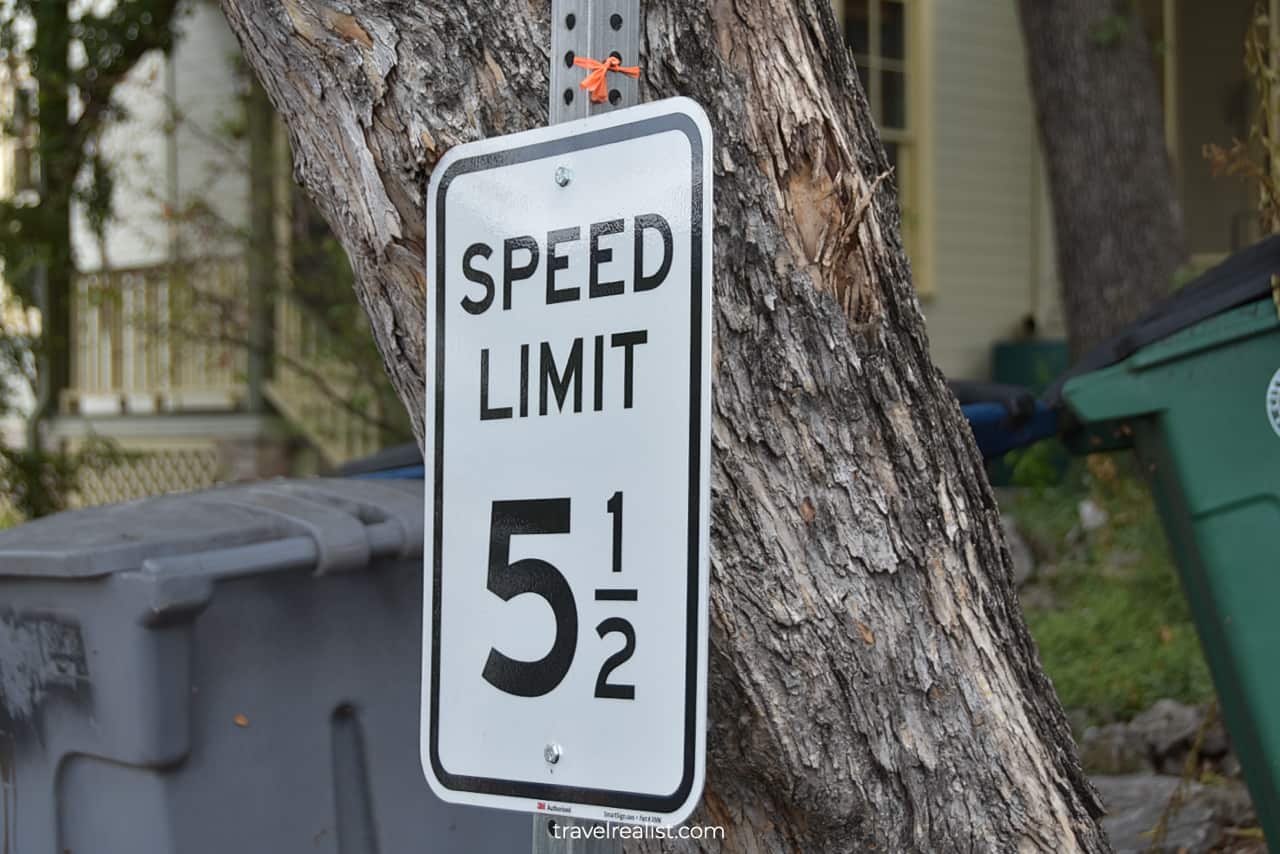
Where to Stay near Flower Hill
Thanks to a central location of Flower Hill, you have a lot of hotels to choose from. Canopy By Hilton Austin Downtown is one of the closest places to stay to the museum.
Hotel ZaZa Austin and Austin Proper Hotel, a Member of Design Hotels are also nearby. You could walk from any of these hotels to Flower Hill in half an hour or less.
Quite high prices per night are the only downside of all places to stay in Downtown Austin. Unless you expect a luxurious stay at a corresponding price, you should find a hotel within a short drive.
Aloft Austin Southwest and TownePlace Suites Austin South are more affordable options south of the Colorado River. You could still reach Flower Hill in 15 minutes or less without traffic.
Arboretum and Domain are two neighborhoods north of the river you should consider. They are a bit further away from the house museum. Yet, you have a lot of amazing choices.
Do not overlook Hyatt Place Austin Arboretum Domain Area and Sonesta ES Suites Austin The Domain Area. Both hotels have solid reviews, pools, free breakfast and parking.
Check out Homewood Suites by Hilton Austin NW near The Domain and SpringHill Suites by Marriott Austin The Domain Area. These places to stay are worth a slightly longer drive.
If none of these options work out, consider staying at Tru By Hilton Austin Nw Arboretum, Tx. This new hotel is northwest of Arboretum and Domain. But it offers a nice stay for more price sensitive travelers.
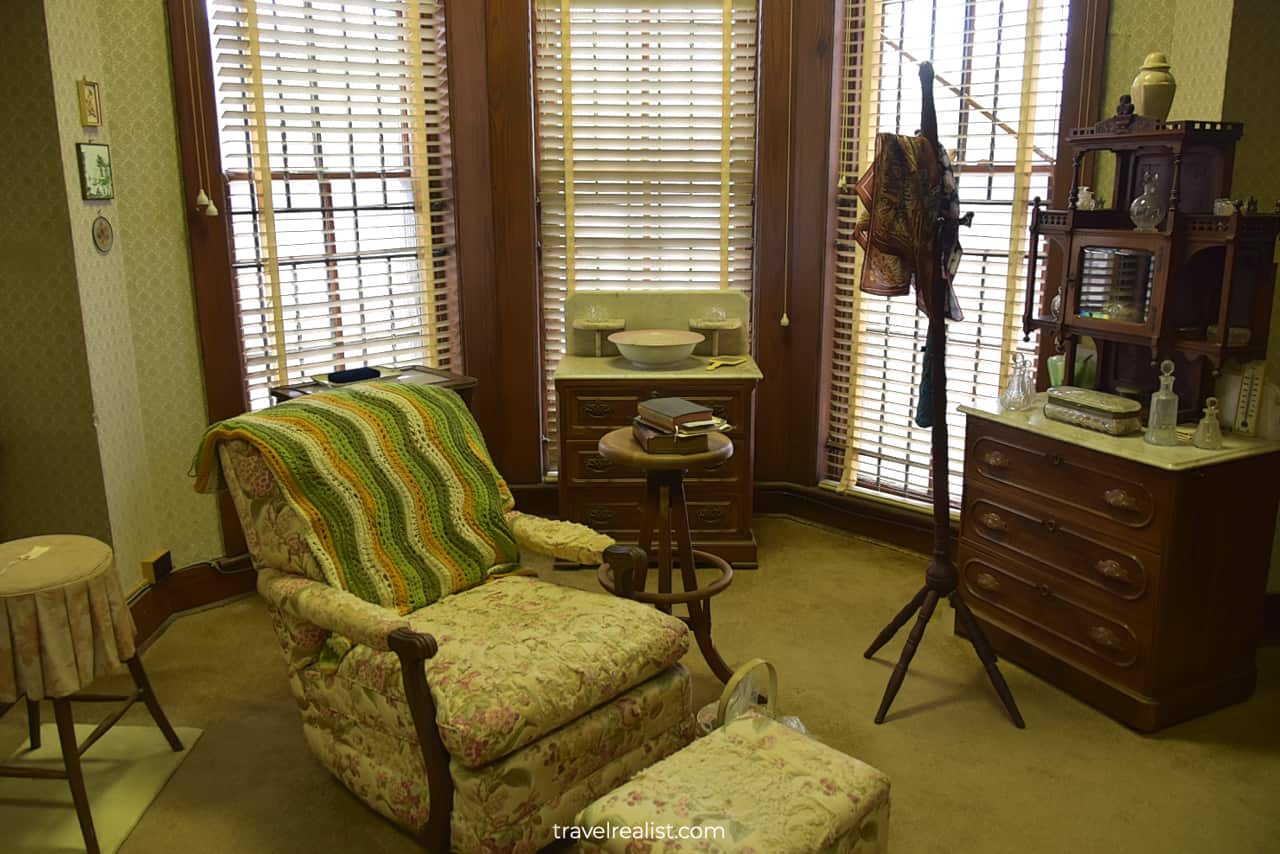
Entrance Requirements & Passes
The grounds of the Flower Hill Urban Homestead Museum are open from 9 a.m. to 1 p.m. on the weekdays. The park is closed on all public holidays. The museum grounds are free to visit.
You need to join a guided tour if you would like to see the interiors of Flower Hill. The tours used to run at 10 a.m. from Thursday to Saturday.
The museum has suspended guided tours since the fall of 2022. The historic house is undergoing renovations. The tours should return once the Urban Homestead is restored to its former beauty.
The Flower Hill Urban Homestead Museum has not posted the updated tour prices online. The museum charged the following fees back in 2022:
- $12 per adult (18+)
- $10 per senior
- $5 per City of Austin or State of Texas employee
- $5 per student
- $5 per child between 3 and 18
There is still no set schedule for guided tours almost 2 years later. You need to email museum staff at info@flowerhillfoundation.org in advance in hopes of arranging one.
In the meantime, you are welcome to experience Flower Hill virtually. The museum website has a tour narrated by Jane Smoot herself.

Takeaways: Flower Hill Austin
The Flower Hill Urban Homestead Museum is a beautiful house museum in Austin. This historic building is minutes away from Texas Capitol and Downtown skyscrapers.
You are certain to be blown away by the grounds of this museum. Even their size is breathtaking. A 1.38-acre lot in such a central location is worth millions these days.
Flowers are blooming on this hill in the spring. A lush green lawn welcomes visitors during the rest of the year. Walk the original carriage drive to the house. And go out of your way to arrange a guided tour.
A chance to see the interiors of this fully furnished house is well worth the effort. The Library, Wedding Parlor, and Packing Closet could be the highlights of your visit.
But Flower Hill could leave a bitter taste in your mouth without a guided tour of the mansion. Rusty gates and chipping paint might give you wrong first impression of this 1877 house.
Take a look at this Flower Hill Austin Video Guide. And visit the YouTube channel for the latest videos.
Frequently Asked Questions
The Flower Hill Urban Homestead Museum is a house museum in Austin, Texas. It protects an 1877 mansion and its grounds. It is one of the oldest single family residencies in the Capital of Texas.
Flower Hill is in Clarksville neighborhood of Austin, Texas. The museum is minutes away from Downtown Austin, Shoal Creek, and the Colorado River. Flower Hill is on West 6th Street between Lamar Boulevard and Mopac Expressway.
You could visit the grounds of the Flower Hill Urban Homestead Museum on the weekdays. They are open between 9 a.m. and 1 p.m. The museum used to offer guided tours of the mansion at 10 a.m. Thursday to Sunday. These tours have been suspended while the house is undergoing restoration.
It is free to roam the grounds of the Flower Hill Urban Homestead Museum. When offered, a guided tour of the mansion involves an admission fee.
Here is a breakdown of these fees with applicable discounts:
– $12 per adult
– $10 per senior
– $5 per city or state employee, student, and child
The Flower Hill Urban Homestead Museum is one of the oldest single-family houses in Austin, Texas. This fully furnished house brings you to the 19th and 20th century.
The name of this museum is quite literal, too. Flowers are blooming on its hill in the spring.
A tour of Flower Hill in Austin, Texas requires some preparation. You need to arrange a guided tour of the mansion by contacting museum in advance. This is your only chance to see the interior during restoration.
Safe realist travels!

